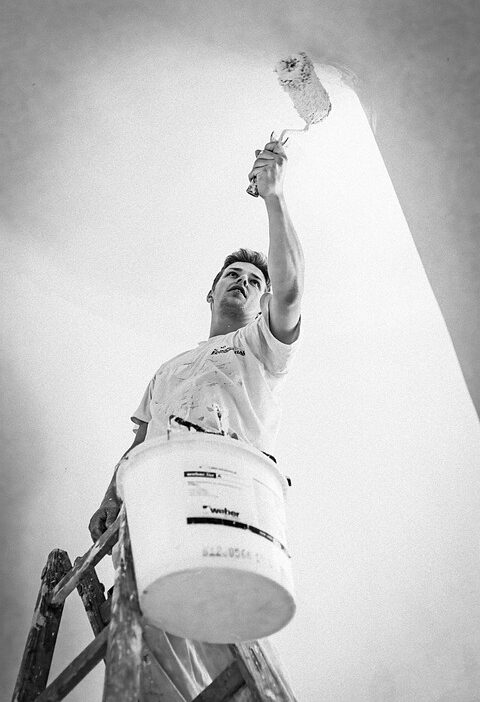The kitchen is often regarded as the heart of the home—where families gather, meals are prepared, and memories are made. As such, designing a kitchen that is both functional and stylish is essential for creating a welcoming and efficient space. This article will explore key elements of kitchen design that balance aesthetics and practicality, ensuring your kitchen remains the ultimate hub of family life.
1. Layout Matters: Understanding Kitchen Work Zones
The layout of your kitchen is crucial for maximizing functionality. The most common kitchen layouts include the galley, L-shaped, U-shaped, and open-plan designs. Each has its own advantages, but the work triangle concept—focusing on the three main work areas: the stove, refrigerator, and sink—should always be at the forefront of your planning.
Tips for Optimizing Layout:
- Galley Kitchen: Ideal for smaller spaces, this layout uses two parallel counters to create efficient workflow.
- L-Shaped Kitchen: Offers more counter space and is perfect for integrating dining areas.
- U-Shaped Kitchen: Provides an abundance of storage and workspace, ideal for larger families or home cooks.
- Open-Plan: Blends kitchen and living areas, promoting social interaction while cooking.
2. Choosing the Right Materials
Materials play a significant role in both functionality and style. Choosing durable and easy-to-clean surfaces is crucial for a kitchen that will endure daily use.
Essential Material Choices:
- Countertops: Options like quartz, granite, and butcher block offer a mixture of durability and style.
- Cabinetry: Opt for solid wood or high-quality laminate that can withstand the test of time while adding elegance.
- Flooring: Porcelain tile, vinyl, and hardwood are popular choices that balance durability with aesthetics.
3. Color and Lighting: Setting the Mood
The color scheme you choose can dramatically affect the overall vibe of your kitchen. Light colors can make the space feel larger and airier, while darker hues can create a cozy atmosphere.
Color Palette Ideas:
- Neutrals: Timeless and versatile, whites and grays are perfect for a modern look.
- Bold Accents: Incorporate pops of color in your cabinetry, backsplash, or décor for a cheerful touch.
Lighting Solutions:
Proper lighting is essential for both functionality and ambiance. Layering your lighting can help achieve a well-lit space:
- Ambient Lighting: Utilize ceiling fixtures for overall illumination.
- Task Lighting: Under-cabinet lights are perfect for work areas.
- Accent Lighting: Pendant lights can add personality and define dining areas.
4. Smart Storage Solutions
Maximizing storage is key in any kitchen design. Adequate storage not only keeps the space organized but also enhances functionality.
Innovative Storage Ideas:
- Pull-Out Cabinets: Ensure that every inch of space is utilized effectively.
- Open Shelving: Adds character while providing easy access to everyday items.
- Nooks and Crannies: Don’t forget about the corners; lazy Susans and pull-out racks can make them more functional.
5. Embracing Technology
Modern kitchens are increasingly becoming tech-savvy. Smart appliances can improve efficiency and convenience, making meal prep a breeze.
Tech Options to Consider:
- Smart Refrigerators: Create shopping lists, look up recipes, and monitor food freshness.
- Wi-Fi-Enabled Ovens: Control your cooking from your smartphone and get alerts when meals are ready.
- Integrated Sound Systems: Enhance your cooking experience with music or cooking podcasts.
6. Personal Touches: Infusing Your Style
Lastly, no kitchen would be complete without personalized touches. Incorporate elements that reflect your personality and style, whether through décor, artwork, or decorative cookware.
Ways to Personalize:
- Artwork: Consider hanging culinary-themed art or family photos.
- Unique Accents: Choose decorative bowls, stand mixers in vibrant colors, or stylish dishware that speaks to your tastes.
Conclusion
Designing a kitchen that is both functional and stylish is a rewarding endeavor that ultimately enhances your home. By focusing on layout, materials, color, lighting, storage solutions, technology, and personal touches, you can create a space that serves not only as a culinary workspace but also as a warm and inviting gathering spot for family and friends. After all, the kitchen is more than just a place to prepare meals; it’s where life happens, and with thoughtful design, it can truly become the heart of your home.



